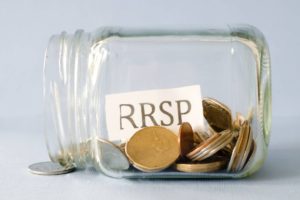 My latest column in Wednesday’s Globe & Mail looks at a strategy called “Topping up to Bracket,” which can be useful to anyone who is temporarily in a lower tax bracket.
My latest column in Wednesday’s Globe & Mail looks at a strategy called “Topping up to Bracket,” which can be useful to anyone who is temporarily in a lower tax bracket.
Click on the highlighted headline to access the online version, assuming you have Globe subscriber privileges or haven’t exceeded the monthly free click quota: A strong tax case for early RRSP withdrawals.
When might you be “temporarily” in a lower tax bracket than usual? This can of course happen when you lose a job or if you’re in your Sixties and transitioning between full employment (typically earning in higher tax brackets) and Semi-Retirement, when it’s tempting to “bask” in lower tax brackets.
Temporary because as Semi-Retirement progresses, you can end up moving back into higher tax brackets: for example, if you start to receive Old Age Security (OAS) at 65, then take Canada Pension Plan (CPP) a few years later, these are both taxable sources of income.
And the big hit can come at the end of the year you turn 71, when RRSPs must be converted to Registered Retirement Income Funds (RRIFs) or else annualized or cashed out. RRIFs entail forced annual withdrawal rates that keep rising between your 70s and your mid 90s.
So that makes “Topping up to Bracket” (a term used in a BMO Wealth Institute paper on the topic, published around 2013) a strategy not to be ignored. In practice it means making sure that in those low-earning years you at least bring into your hands each and every year the roughly $12,000 of untaxed earnings that’s called the Basic Personal Amount (BPA). And as the G&M column explains, it’s also a good idea to at least bring in the dollars that are in the lowest tax bracket (15% federally, 5% in Ontario), or roughly $42,000. There are of course higher tax brackets above that but the law of diminishing returns starts to kick in beyond the $42,000.
Note too that this is a “use it or lose it” proposition. If for example a year went by that you failed even to bring in even that $12,000 income that would not have been taxed, you can’t carry forward the opportunity to benefit from it the following year. You will of course have another opportunity for the BPA that year but it won’t double up because you neglected to earn low- or non-taxed income the previous year.
We have in the Hub and elsewhere looked at the related phenomenon of drawing down your RRSP early to make sure you are earning some of these non-taxed or low-taxed dollars, perhaps even choosing to defer the receipt of CPP or OAS a few more years. That way, your CPP or OAS cheques will be bigger once they do arrive. In the meantime you have “melted down” your RRSP a bit so that once the RRIF begins, it may generate somewhat less taxable income than if you had never started to draw it down early.
For more on this theme, click on the three highlighted Hub blogs at the bottom of this blog (such as the one by Doug Dahmer) or put his name or other search terms in the Hub’s search engine to the right.
Motley Fool blog on how “Fools” can play the Robo-Adviser revolution
Also this week, Motley Fool Canada ran my latest (monthly) blog, which looks at how stock-pickers not otherwise inclined to using broadly-based ETFs can nevertheless seek to profit from the big shift to robo advice. Click on the highlighted text for the full blog: How Fools can play the Robo-Adviser Revolution indirectly.
As the piece explains, robo-advisers are in a way two steps removed from the individual stock focus of the Motley Fool family of newsletters and books. Robos involve usually packages of ETFs, which is instant diversification of multiple asset classes, albeit for a fee (one that’s usually well below mutual funds and some other managed money solutions.). But to the extent Canada’s big banks are moving into the space, not to mention some major mutual fund companies, you can play the robo space indirectly by investing in something like an ETF I’ve long owned: the iShares Capped Financials Index ETF (XFN/TSX).



Re. A strong tax case for early RRSP withdrawals. That’s why I started my RRIF as soon as I retired and delaying my CPP & OAS to 70. People are always trying to grab their CPP & OAS as soon as possible but by delaying I transfer longevity risk to the government and I am able to withdraw from my RRIF at the lowest possible tax rates. Makes sense to me anyway
I too have started my RRIF at 55 in order to draw down my RRSPs before I start my CPP but I have to do this aggressively as I have to take my CPP at 60 or else I will have too many non contributing years (retired at 52) , especially if I wait until 65 years old or later.
Often overlooked is the inability to split income once the first spouse passes away. Yes, the spousal rollover tax free of RRSPs/RRIFs is great, but not only one spouse is left to pay all the tax. If you add pensions, non-reg income and RRIF income, the surviving spouse may be automatically pushed up the tax brackets and even into the OAS clawback. We are a big proponent of this Topping up the Bracket/or the OAS clawback start point. Great article.